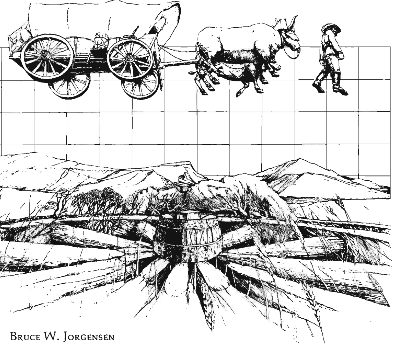Articles/Essays – Volume 08, No. 2
Mormon Students in Great Britain
The Latter-day Saints Student Association is a rather recent organization for college age youth who are not attending a Church school. The following note discusses LDSSA activities in Great Britain. We hope in future issues to include LDSSA events and activities on other campuses in the United States and abroad.
The British education system is organized in such a way that only 22% of each yearly batch of graduates are able to obtain a place in higher education (8% at Universities—the rest in Colleges of Education and Polytechnics). This means that higher education is effectively reserved for an elite compared to the wider intake of the U.S.A. and many other countries. There is also a tradition, facilitated by generous government grants, that education be continued in an institution away from the student’s home town. Great advantages can be derived from this system—undergraduate teaching is at a high level and the departure from the family home gives a sense of independence to the young people—but there are also some disadvantages, some of which are particularly felt by LDS students.
Although Church membership is growing steadily in the British Isles, it remains a predominantly working-class group. In this country there is a very strong correlation between social class and educational achievement; therefore, there is still only a small number of young Church members in higher education. Of these, the great majority find themselves the only “Mormon” on campus. The biggest problem the LDS student has to face is making a satisfactory accommodation between the teachings of the Church and the new knowledge he is gaining in his academic life; between the traditional views of the Church membership and the often contradictory social attitudes of fellow students. Being alone on campus can make this task immeasurably more difficult and, sadly, can be hampered even further by some local Church members who are wary of “liberalism” and who discourage the student in any efforts to build bridges, by overemphasizing the “simplicity” of the Gospel and the immutability of traditionally held views. (As an example, a very literal interpretation of Genesis is still seen by a great num ber of members as the only permissible view.)
There are basically three ways the student can react to the situation:
(1) by giving up the fight and rejecting the Church.
(2) by compartmentalising conflicting views, repressing challenging ideas and waiting for the post-university period when they can be conveniently forgotten or at least assimilated in a less concentrated form.
(3) by thinking through the problems and conflicts and establishing a method of inquiry that will enable him to work towards the life-long goal of “em bracing all truth.”
It was with these problems in mind that the British Isles LDS Student Association was formed nearly five years ago. The main work it undertakes is per sonal contact with students through student counsellors and a yearly convention. The Association has on the whole been successful and the impression exists (although no figures back it up) that the percentage of students falling away from the Church has lessened.
The last convention was held at Edinburgh with the theme of “Whate’er thou art, act well thy part.” It consisted of the traditional mixture of talks, discussion groups, socials, visits and a concluding testimony meeting. Some speakers stood at opposing points on the conservative-liberal axiom with, on one occasion, one group being lectured on the evils of family planning next door to another group being told that political activity, conservative or socialist (the English interpretation at least!) was essential in order to love one’s neighbour. On the whole, however, most speakers kept to an open-minded middle ground. The keynote address was perhaps the one given by Dan Workman (Church Seminary and Institute Program) who showed the untenability of a conservative/liberal dichotomy by reference to the life of Christ. But just as at the great International Conferences, the main worth was that done “in the corridors”—the spontaneous discussion groups that sprang up among students and above all the dedication of Elder Marion D. Hanks, his wife and the other leaders who attended each moment of the convention and made themselves largely available for personal conversations. More than one student came away with a realistic new appreciation of the Church after an informal discussion with Elder Hanks.
Some students expressed the idea as they left this weekend of camaraderie and fraternity that it would be great to see strong LDS Student Associations on each campus. This situation would certainly make life a lot easier, but in the meantime perhaps these pioneer students will benefit from the difficulties that they face.


 Back to full Issue
Back to full Issue

